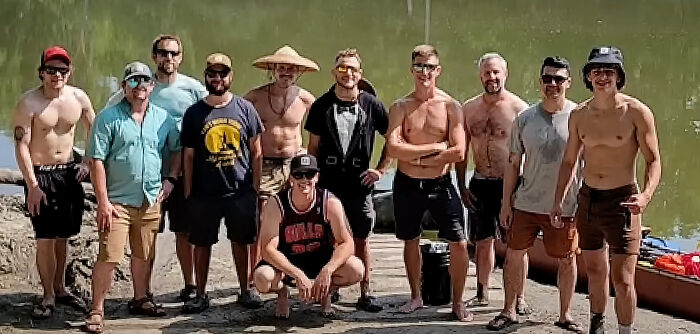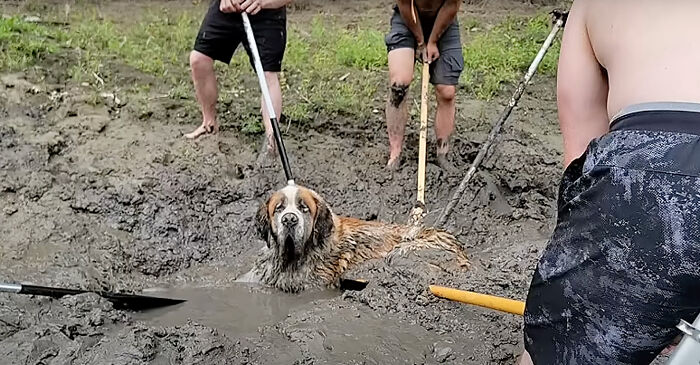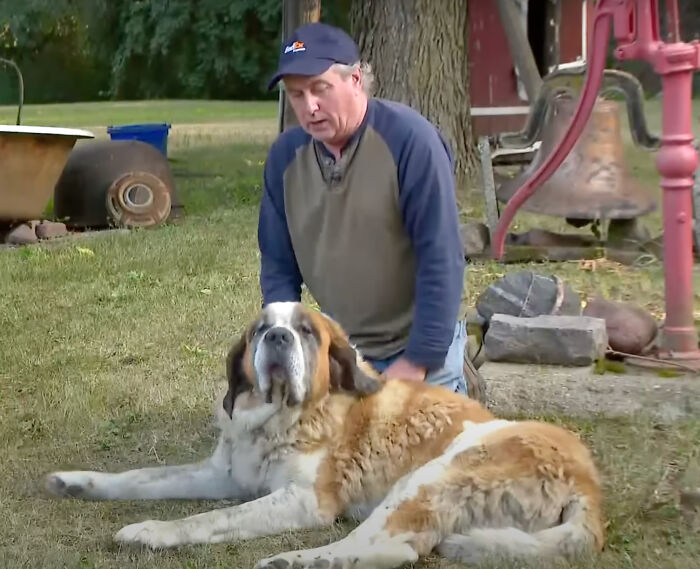The life story of Alex Lewis is like no other. This man refused to give up on his life no matter what it took, and today, he’s thriving with the help of his loving wife Lucy Townsend, and their son.
Alex and Lucy always knew they were meant for each other. When they married and welcomed their son Sam into their life, they felt like the happiest couple on Earth. But then in 2013, around the time Sam turned two, this family’s life took a different turn.

Both Alex and Sam caught the flu, or at least they believed so. However, as the boy got better in a short period of time, Alex wasn’t feeling fine even days after he experienced the flu-like symptoms.
“Because we owned and lived in a pub and came into contact with lots of different people, I assumed it was a seasonal cold and thought it started off as man flu,” Alex told Metro.
Instead of improving, his condition worsened and he became feverish and noticed blood in his urine.
As he could feel something was very wrong, he went to the hospital where doctors told him he contracted a streptococcal infection (type A). Unfortunately, at that point, the infection penetrated deep into the tissue and the organs and caused sepsis. Alex had contracted shock syndrome, septicemia, and necrotizing fascitis – and his body was attacking itself from the inside out.
“I called an ambulance, and within eight minutes, they were there. At the hospital, we went straight into resuscitation, and I was told to say goodbye. His kidneys were shutting down, and they were going to put him on life support,” his wife Lucy told The Guardian.
Doctors’ prognoses were dull. They told the family there was just a three percent chance that Alex would survive as his face and body turned black.
“They were going to turn my life support off, but they wanted to give me one more night to see if I improved, and they wanted to give my family a chance to say goodbye,” Alex told Metro.

“I cannot imagine what Lucy and my mum were going through.
“Having spoken to them since it happened, I think they were more in shock as they couldn’t believe something so incredibly invasive was happening so quickly,” he added.
“I don’t remember being in excruciating pain at this point, but my family remembers seeing me in absolute agony.”
It was determined that a flesh-eating bacteria was poisoning his body so doctors had to amputate his left arm up to the elbow. Sadly, as months passed by, Alex lost all of his limbs, and doctors were also forced to cut parts of his face in order to save his life.
“I can remember seeing my legs in hospital and how they were getting blacker and blacker,” Alex told The Guardian. “The blackness was creeping up towards my waist. I don’t remember seeing my left arm in that condition, but I can remember my legs vividly.”
As Alex lost his lips, plastic surgeon Alexandra Crick took skin from his shoulder in an attempt to fix his mouth.
“It would take me about an hour to eat a sandwich at night, and that was with the help of the nurse,” he told the Daily Mail.
“The last available skin for surgery was on my shoulder,” he explained. “So they replaced the temporary flap with that. All my other skin had to be used for grafts or was scarred.”
“Having my bottom and top lip done at the same time like this was a world first. It’s one piece of skin, and it was like if you imagine placing a bag in your mouth and then sewing around the edges. After the original operation, I had to have them every three or four months.”

Looking at his father, and how different he was, Sam was afraid to approach closer to him, but Lucy found a way to explain to him why his dad looked like that, which wasn’t easy as Sam was just two years old at the time.
After spending months at the hospital Alex could finally go home. The good thing was that doctors managed to save the elbow of his right arm which allowed him to have a prosthetic and be able to use his arm. Eventually, he could speak again as his lip surgery was a huge success.
“That one elbow is his whole independence,” Lucy said.
“I had to relearn everything,” Alex added. “From learning to eat, drink, put my clothes on, to learn to use a prosthesis, and to self propel a manual wheelchair.”
Today, Alex is involved in a number of tech projects which help ease the lives of disabled people. Among the rest, he has tested solar-powered, battery-assisted four-wheeled handles which have been designed by masters students at Southampton University.
Despite his condition, he’s living a quality life and is doing a lot of things, such as kayaking and climbing. In 2019, he climbed one of Africa’s tallest mountains using a specially adapted buggy.
“Since becoming an amputee, I’ve been fortunate enough to try out a number of training methods to keep my fitness up, working with physios and visiting the Help for Heroes training facilities,” he shared with Sports Management.
“I’ve had first-rate guidance, but nothing has been as effective as EMS training, especially in such a short space of time.
“It’s amazing how the machine helps me to engage muscles I haven’t felt since I lost my arms and legs,” he added.
“I feel stronger in training, daily life tasks are easier, and I’ve gained greater confidence that I can take on these challenges.”
His Wild Wheelchairs Project, besides helping improve the lives of disabled people, raises money to finance the construction and operation of a wheelchair manufacturing facility in Ethiopia.
Alex is also a motivational speaker who is happy with his life.
“I’ve lived more of a life in the past four years than I did in the previous 33, and it’s made me realize how much I love Lucy and Sam,” he told Metro.
“There was so much I regretted not doing when I had arms and legs, but I am not letting that happen again. I would not change anything, not in a heartbeat.”
Sam also learned to love his dad for who he is and is proud of him.
We truly admire this brave man’s resilience. His story is proof that no matter the curveballs life throws at us, we should always do our best to end up winners.
Bachelor Party Takes Unexpected Turn When They Hear Dog Barking In The Mud, Leading to an Unforgettable Rescue Mission.
Bachelor parties are a fun way to celebrate the ending of singlehood and the beginning of married life. Some people go absolutely wild in Vegas, some enjoy a quiet celebration with just a few buddies – there are a plethora of ways to have that last ‘huzzah’. Mitch White planned to have a relaxing canoe trip with his closest buddies. The groom-to-be had no idea that this trip would turn into a rescue mission for an elderly dog stuck in the mud. That’s a bachelor party he surely won’t forget.

Image credits: Carver County Sheriff’s Office
One lovely day, Mitch, a young groom-to-be, gathered his closest friends and set out on a canoe trip to celebrate his upcoming marriage. This bachelor party was supposed to be all about nature and bonding. And is there a better way to bond than rescuing a pup together?
Just after the group had lunch and moved on with their journey, Mitch’s nephew, Gaylen Fraenkel, heard a sad barking. They hadn’t encountered anyone, so it was highly unlikely it was some camper’s dog. The young man decided to turn the canoe around to make sure everything was okay. And good thing he did – a desperate dog was stuck in thick mud and using his last bits of strength to call for help.
Upon closer inspection, they saw that the poor fella was an elderly Saint Bernard. He was very thin and exhausted with a nasty tick attached to his eye. The rest of the group turned their canoes around and jumped in to help. The mud was so deep and thick, everyone sunk up to their knees. But they were relentless in their attempt to rescue the dog, using oars as shovels to dig him out.
Mitch White was out on his bachelor party trip with his closest friends. The guys were canoeing when they heard barking

Image credits: WCCO – CBS Minnesota
When they approached the shore they saw a dog asking for help, completely stuck in the mud

Image credits: WCCO – CBS Minnesota
The guys quickly jumped out and started digging him out, using oars as shovels

Image credits: WCCO – CBS Minnesota
To keep the pooch comfortable, they offered him water, of which he drank half a gallon before stopping. The kind guys shared their lunch with him, giving him some lunch meat and summer sausages. This quick snack was supposed to give him an energy boost to get up. The bachelors named him Wilson and called out his new name in an attempt to get him up, but he was too tired, even after the delicious summer sausages.
The group didn’t want to approach Wilson too closely as they didn’t see any collar and weren’t sure if he was friendly. That’s a good practice when dealing with a dog you don’t know.
Alex, one of Mitch’s friends, decided it was time to call for help and dialed up 911. He explained the situation and they dispatched the Carver Fire Department, who came to Wilson’s aid in 20 minutes. They brought a harness that they were able to get under his chest and the fire department men, together with two of Mitch’s friends, pulled Wilson out of his muddy prison. Hurray!

Image credits: WCCO – CBS Minnesota
Thanks to the kindness of the bachelors and help from the local fire department, the adorable pooch was rescued

Image credits: Carver County Sheriff’s Office
After a successful rescue mission, Wilson was in for another pleasant surprise. Five minutes after he was pulled out of the mud, his owner showed up. He was surprised to see his four-legged pal all covered in mud. “Ed! What are you doing down there in the mud?!” he exclaimed at the sight of his dog. That’s how Mitch and his friends found out they’d been calling Ed the wrong name. Although he does look like a Wilson to me.
A couple of days ago, Mitch got a pleasant surprise when a friend of the owners reached out to him. He wanted to let Ed’s saviors know that he was doing much better, recovering nicely and was already moving around on his own. I bet his owners won’t let him out of their sight now.
Ed, a lovely senior Saint Bernard, was reunited with his owner and is feeling much better

Image credits: WCCO – CBS Minnesota
Adorable Ed was clearly born under a lucky star. Mitch’s party found him just in time to get him to safety. But what if they hadn’t found him?
Owners want the best for their dogs – the best treats, loads of toys and freedom to roam and explore. Unfortunately, letting your dog off the leash can be very dangerous as they can get lost like poor Ed here. They might decide to snack on something dangerous that can result in a stack of medical bills and a long and painful recovery. Keep an eye on your pet to avoid injuries or some malicious person trying to steal your beloved pooch.
Walks with their human are the highlight of any dog’s day and they look forward to it. It’s that one time of the day when they have your undivided attention and love, so try to make the best out of it. Avoid going on your phone or listening to music; instead, try talking to your dog and watch their face light up when you say, ‘hey buddy!’. The more fun activities you do, the stronger the bond you create with your pooch. Look into those eyes and remember that you are everything to them, so make the most of the short time you have together.
People in the comments praised the bachelors for their act of kindness
















Leave a Reply